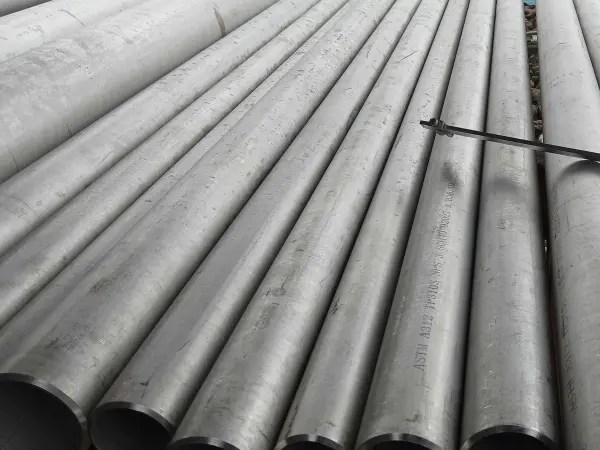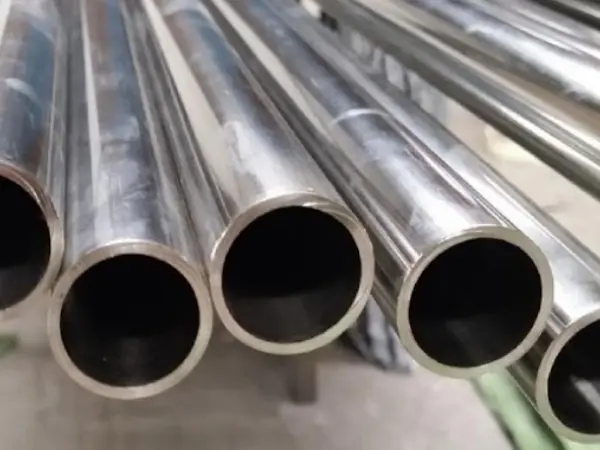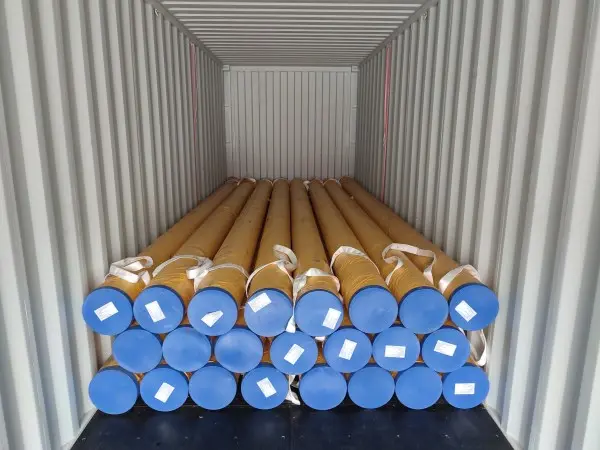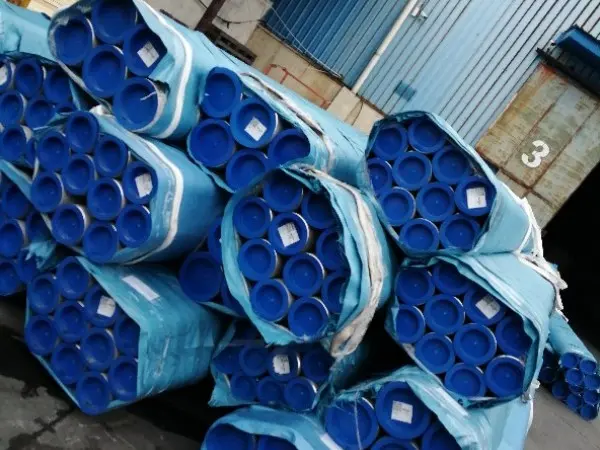- No.101 Wanbo 1st Road, Nancun Town, Panyu District, Guangzhou, Guangdong, China
- 0086-020-84886013,84886093,84886091,84886012
- sales@finegosteel.com
Stainless Steel Pipe
Duplex Stainless Steel Pipe
Process Method: cold drawn and cold rolled
Out Diameter: 0.6mm-1200mm
Wall Thickness: 0.3mm-120mm
Length: 6-25 meters
Steel Grade:
200 (Ni : 0.8%), 201B (Ni : 3%), 201H (Ni : 5%)
301 (Ni : 6%), 304, TP304, TP304L/304L, 321, TP321, 316, TP316L, 316L, 316Ti
317, 317L, 309S, 310S(2520), 347, Duplex 2205, Duplex 2207, etc.
Standards: ASTM / ASME, GB, DIN, JIS, T14975, etc.
Applications: chemical processing, transport and storage; production and transportation of oil and gas; marine environments; pollution control equipment, structural and mechanical components, heat exchangers
Standard
Specification
Advantages:
Strength: Duplex stainless steels have approximately double the strength of regular austenitic or ferritic stainless steels.
Toughness and ductility: Duplex stainless steels exceed the toughness and ductility of ferritic grades although they are not as touch as austenitic grades.
Corrosion resistance: As with all stainless steels, corrosion resistance depends mostly on the composition of the stainless steel, with chromium, molybdenum and nitrogen content being the most important. Duplex stainless steels are extremely corrosion resistant and even in chloride and sulphide environments, duplex stainless steels exhibit very high resistance to stress corrosion cracking (SCC). SCC is a type of corrosion that takes place when a particular set of factors are present: Tensile stress, corrosive environment and a sufficiently high temperature.
Heat Resistance: Duplex stainless steel has higher heat conductivity and lower thermal expansion than austenitic steels. Duplex grades can easily be used down to temperatures of at least -50°C because at low temperatures they have better ductility that ferritic grades of steel.
Cost: Duplex stainless steels have lower nickel and molybdenum contents than their austenitic counterparts. This lower alloying content means that duplex stainless steels can be lower in cost. Further to this, it is also possible that the thickness of duplex stainless steel can be reduced as it has an increased yield strength. Thinner products mean that significant weight savings can be made.
Weldability: Duplex stainless steels tend to have good weldability and all standard welding processes can be used although they are not quite as easily welded as the austenitic grades.
Applications of Duplex
Duplex and super duplex stainless steels are weldable.
Duplex stainless steel is a very useful metal that is used the world over. It gets its name from the fact that it consists of two different grades of metal.
Essentially, Duplex is a Fe-Ni-Cr alloy that has a two-phase ferritic-austenitic stainless-steel microstructure when it is at room temperature.
Duplex steels are characterised by high chromium (19–28%) and molybdenum (up to 5%) and lower nickel contents than austenitic stainless steels. The most used duplex stainless steel grades are the 2205 (22% Chromium, 5% Nickel) and the 2507 (25% Chromium, 7% Nickel); 2507 is known as “super duplex” due to its higher resistance to corrosion.
The advantage of combining ferritic and austenitic grades is that the resultant metal has a metallurgical structure that consists of two phases and therefore benefits from the properties of both microstructures.
These properties make duplex stainless steel pipe highly sought after in heavy industries, like oil and gas nuclear and chemical processing.
What is duplex stainless steel?
Duplex stainless steel (UNS S31803/UNS S32205) has been developed to overcome the issues of the 300 series stainless steels, it has stronger resistance to seawater corrosion compared to stainless steel 316.
Note that, despite Duplex stainless steel shows good high-temperature oxidation resistance, 2205 suffers from embrittlement if kept at temperatures above 300ºC for some period of time. (a situation that can be rectified only by a full solution annealing treatment). For this reason, Duplex stainless steels are never used for temperatures in excess of 300ºC.
UNS2205 duplex steel finds application in marine projects, oil & gas exploration, closed loops water systems, desalinization plants, hydrocarbons storage and transportation, downstream refining, pulp, and paper.
What is super duplex?
Super duplex stainless steel is a variation of the duplex steel alloy which is used in the oil & gas, chemical, power generation, mechanical and desalination industries. The higher chromium and molybdenum content of Super Duplex compare to Duplex makes it extremely resistant to uniform corrosion by organic acids like formic and acetic acid. Super Duplex also provides excellent resistance to inorganic acids, especially those containing chlorides.
Duplex steel Pipe & Tube Chemical Composition:
|
Grade |
C≤ |
Mn≤ |
P≤ |
S≤ |
Si≤ |
Cr |
Mo |
N |
Cu |
|
S31803 |
0.03 |
2.00 |
0.03 |
0.02 |
1.00 |
21.0–23.0 |
2.5–3.5 |
0.08–0.20 |
- |
|
S32205 |
0.03 |
2.00 |
0.03 |
0.02 |
1.00 |
22.0–23.0 |
3.0–3.5 |
0.14–0.20 |
- |
|
S32750 |
0.03 |
1.20 |
0.035 |
0.02 |
0.80 |
24.0-26.0 |
3.0-5.0 |
0.24-0.32 |
0.5 |
|
S32760 |
0.05 |
1.00 |
0.03 |
0.01 |
1.00 |
24.0-26.0 |
3.0-4.0 |
0.20-0.30 |
0.50–1.00 |
Duplex steel Pipe & Tube Mechanical Properties:
|
Mechanical properties |
Tensile,min,ksi[MPa] |
Yield,min,ksi[MPa] |
Elongation,%(min) |
Hardness,HB(max) |
|
S31803 |
90 [620] |
65 [450] |
25 |
290 |
|
S32205 |
95 [655] |
65 [450] |
25 |
290 |
|
S32750 |
116 [800] |
80 [550] |
15 |
300 |
|
S32760 |
109 [750] |
80 [550] |
25 |
300 |
Process
The solid steel ingots or blooms are then transformed into bars, firstly being reheated and then forged and/or rolled to the desired diameter. Solution annealing is a heat treatment that ensures the internal structure of the bar is consistent, after which the bar is quenched. To present a consistent surface finish, bars will then be mechanically ‘peeled’ to remove the as-produced surface.

 Language
Language









